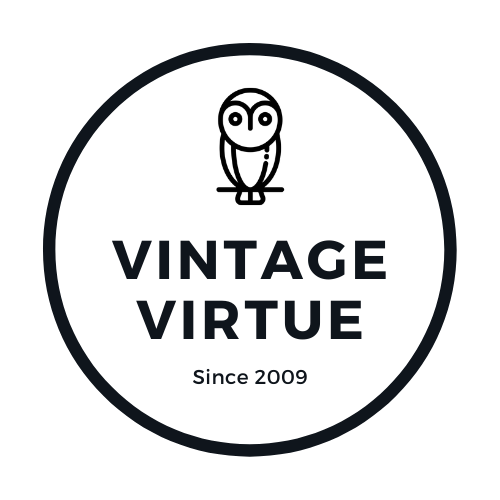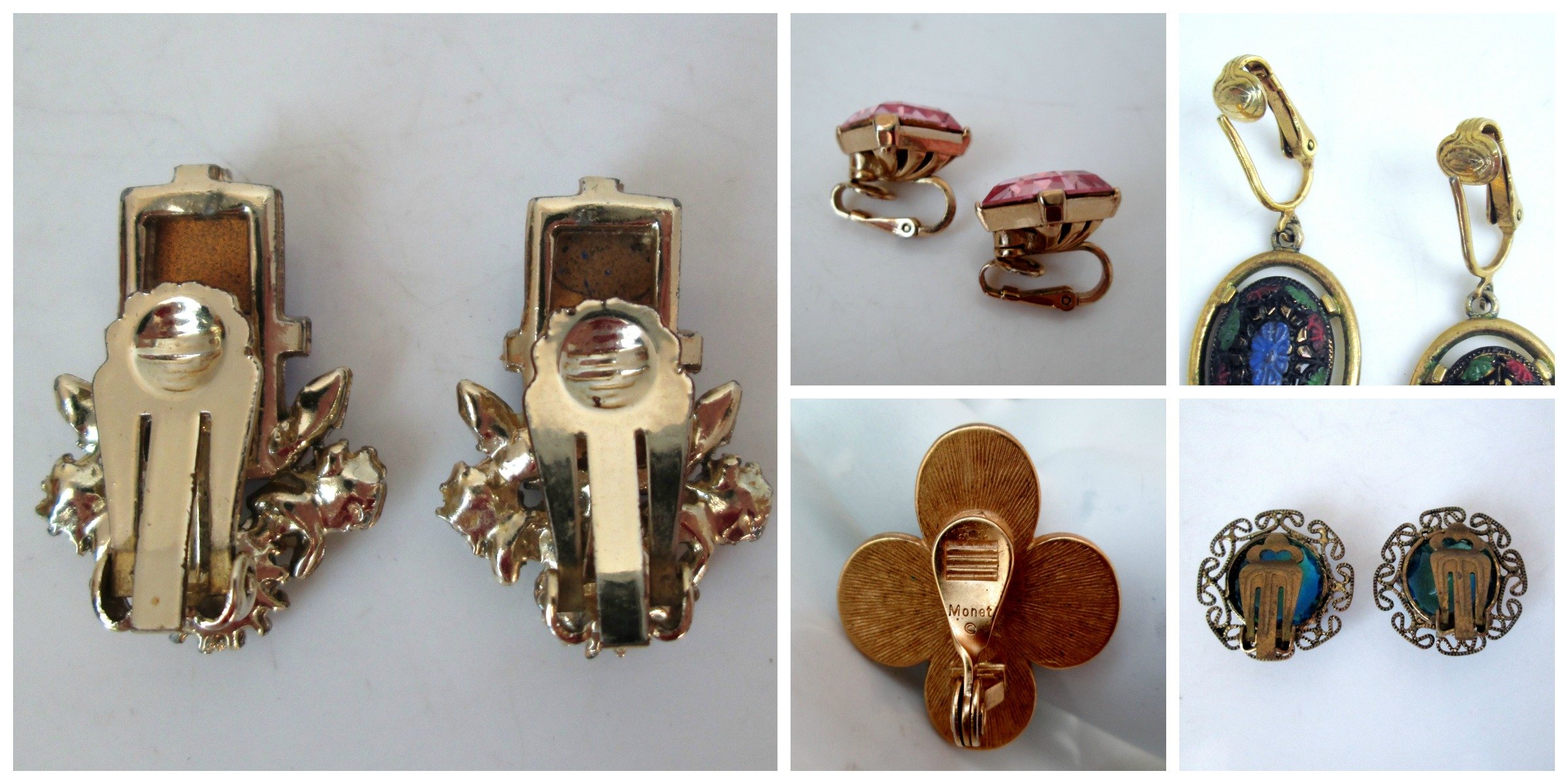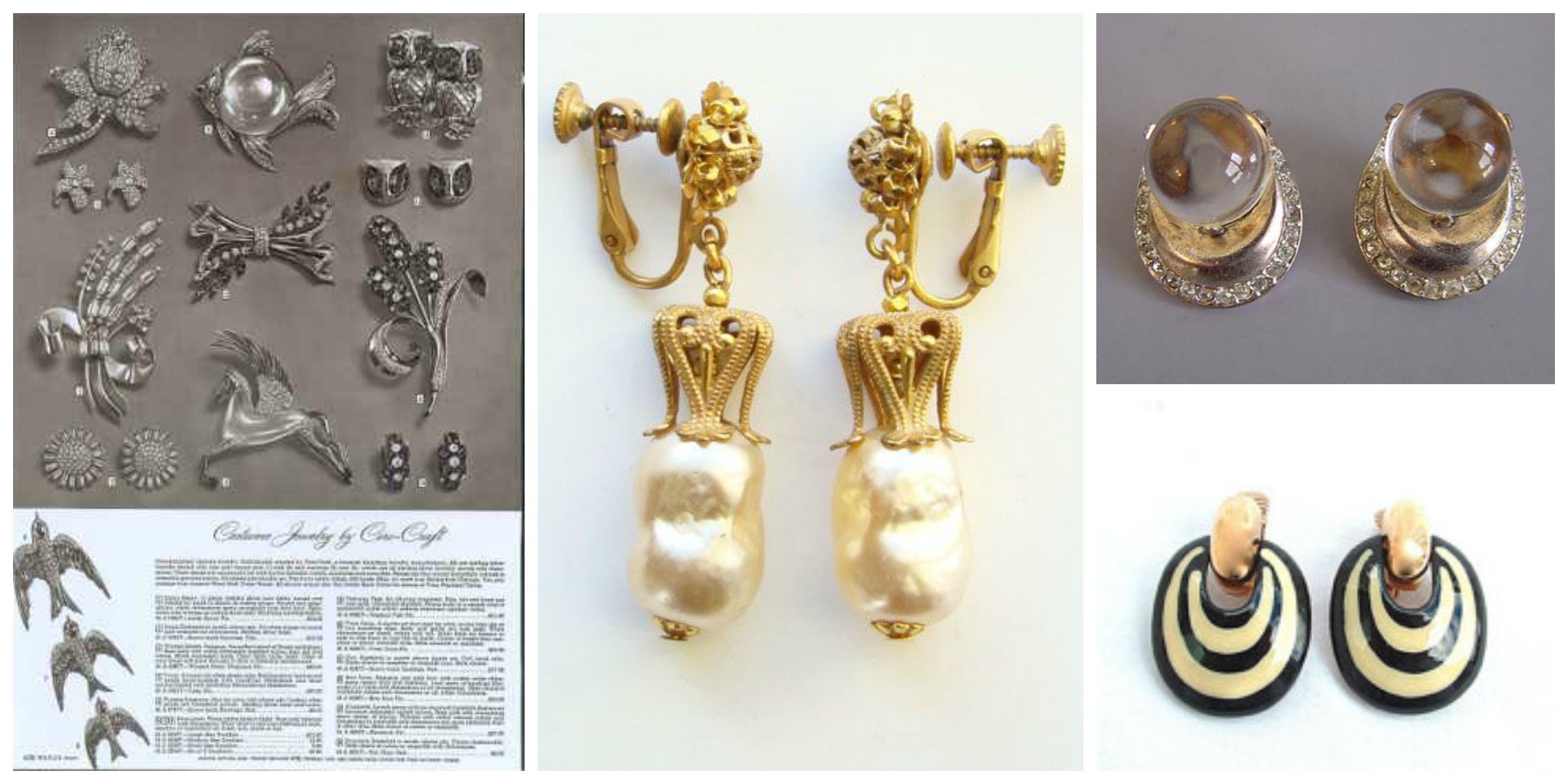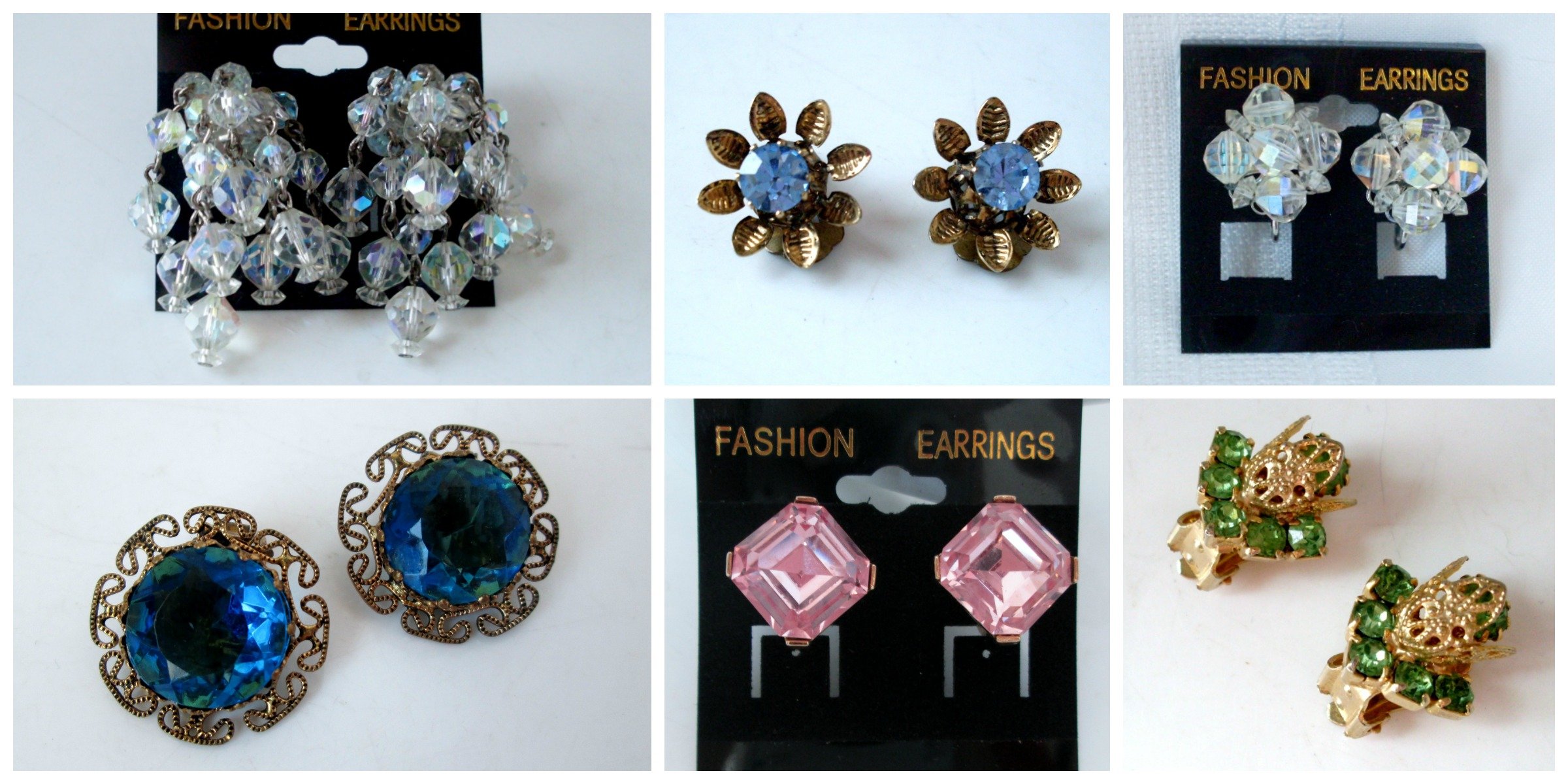Elegant Earwear: A Beginner's Guide to Choosing and Buying Vintage Clip-On Earrings
Earrings are the definitive eye-catching accessory, and vintage costume jewelry earrings are a classic choice to add sparkle to your wardrobe. Some vintage earrings were part of a matching set with coordinating pins or necklaces, while others were created to stand alone as accents to an ensemble. Either way, due to their size, earrings are often an affordable path to starting a vintage costume jewelry collection.
Whether you have pierced ears or not, there is no need to forgo style. The variety of styles available in clip-on earrings can match those offered for pierced ears. By choosing vintage clip-on earrings, you will be exposed to styles no longer available in stores today. Before you enter the world of vintage clip-on earrings, it is vital to know precisely what you are looking for in terms of style, closure, and period. These details will help make your shopping experience more efficient.
The Origin Of Clip-on Earrings
The 19th century was a critical moment in the course of earring history. During the mid-19th century, women abandoned the bonnets that had been in fashion and began styling their hair up. Earrings now re-emerged as fashionable accessories, but Victorians believed piercing the flesh was uncivilized. As the 20th century began, a solution was engineered with the invention of clip-on earrings. This new design allowed people to decorate their ears without the “disgrace” of piercing holes in their ear lobes. The crystal chandelier style of clip-on earrings is now considered an icon of Victorian-era fashion.
Clip-on earrings enjoyed another surge in popularity during the 1920s when the short, boy-like hairstyles worn by flappers offered ear embellishments to become a focal point once again. Diamante clip-on earrings became prevalent in the 1920s due to their simple, elegant styling. The clip-on trend continued to be the fashion throughout most of the 20th century, and as a result, vintage clip-on earrings are still widely available, ranging in style from the 1920s through the Great Depression and the Second World War.
The evolution of style trends through the decades is often noticeable when shopping for vintage clip-on earrings. The 1920s and 1930s frequently featured Art Deco-inspired geometric designs, while more feminine floral designs began taking over in the 1940s and into the 1950s.
Screw-back closures were the first closure types created for clip-ons. The paddle back and simple clip versions were the following styles introduced in the 1930s. The kind of metal the earrings are made of can also give clues that will help identify the date of manufacture. The purer silver and gold used in the early 20th century had rhodium and palladium added during the latter half.
Earring Closure Styles
Clip-on earrings of every style depend on some closure, clasp, or clip that attaches it to the earlobe. The following styles are some of the most frequently found clip-on earring types:
Paddle Back: The most common vintage closure. A wide, paddle-shaped hinge clip that folds up to attach tightly to the earlobe. The tightness can be adjusted by loosening the center tab.
Simple Clip: A U-shaped hinge clip that slides over the ear lobe is adjusted to the correct tightness at the hinge, or it may fall off.
Screw Back: This closure must be screwed into place when wearing, but the advantage is that they are easily adjusted to the desired level of comfort and security.
Friction Clips: Post-less Omega and Monet clips are commonly called “friction clips.” They are similar to the simple clip but incorporate a friction hinge as the mechanism. These are quite comfortable clips, but neither is used for large or heavy earrings.
Magnet: In magnetic closures, the magnets are set into the front and the back of the earring using magnets with opposite polarity on either side of the earlobe.
Vintage Jewelry Designers Of Note
Coro’s Corocraft and Vendome lines of jewelry were best known for their Jelly Belly pins, but many of these pins were sold with a coordinating set of earrings. "Jelly Bellies" get their name from their transparent Lucite bellies, which have both beautiful and whimsical qualities. Most of these were made in the 1940s, but some styles continued on into the early 1960s.
Eisenberg & Sons created a line of sterling silver earrings set with citrine (a type of Quartz), which Eisenberg branded as “Topaz Quartz.” Their charming enameled pieces from the 1970s include the hand-painted, 18-carat gold earrings that were part of the Artists Series.
Juliana’s pieces are noted for having hardware that assists collectors in identifying genuine pieces from fakes. Most Juliana clip-on earrings had paddle backs; screw backs are rare, so be careful to authenticate claims when possible. Juliana’s earring styles consisted of rhinestones and jewels arranged in clusters, cascades, or clumps, sometimes with dangling jewels swaying freely. Most Juliana pieces suggested forms of nature, such as leaves on a branch, flowers, and crystals; others looked like birds, snowflakes, or shooting stars.
Miriam Haskell was a costume jeweler who designed earrings that accentuated her famous necklaces’ looks; many featured opulent, luxurious floral designs. Her gilt, pearl, and crystal designs are considered her signature pieces.
Care And Storage Of Clip-on Earrings
Clip earrings need the same primary care as any other type of vintage jewelry. To prevent damage to the jewelry from the acids and oils of the skin, wipe earrings clean with a soft, moist cloth after each wearing. Before applying a commercial jewelry cleaner, please ensure it is safe for your specific type of metal or gemstone.
Be careful when opening earrings; note to open them from the top of the clasp. Avoid pulling the clip open from the side as this may cause damage to the paddle. Always store earrings in clean, dry jewelry boxes or segmented drawers to reduce potential environmental or other physical damage.









